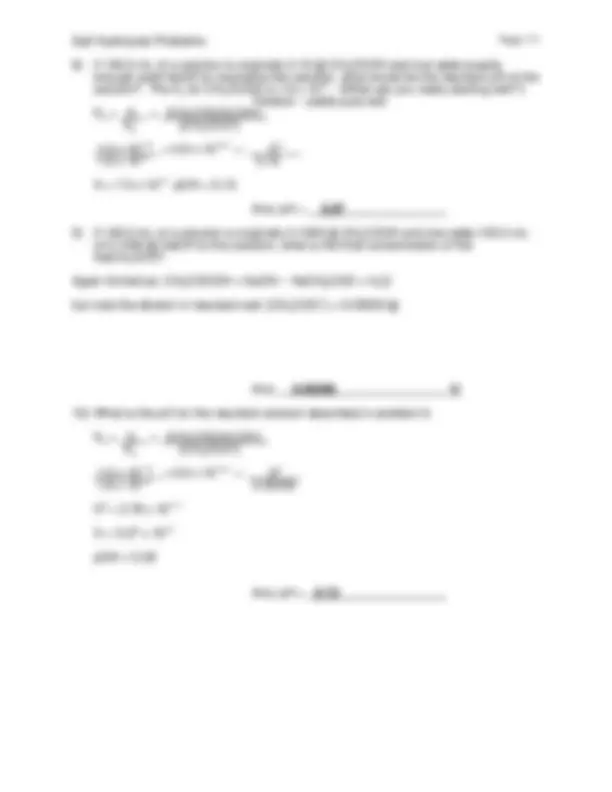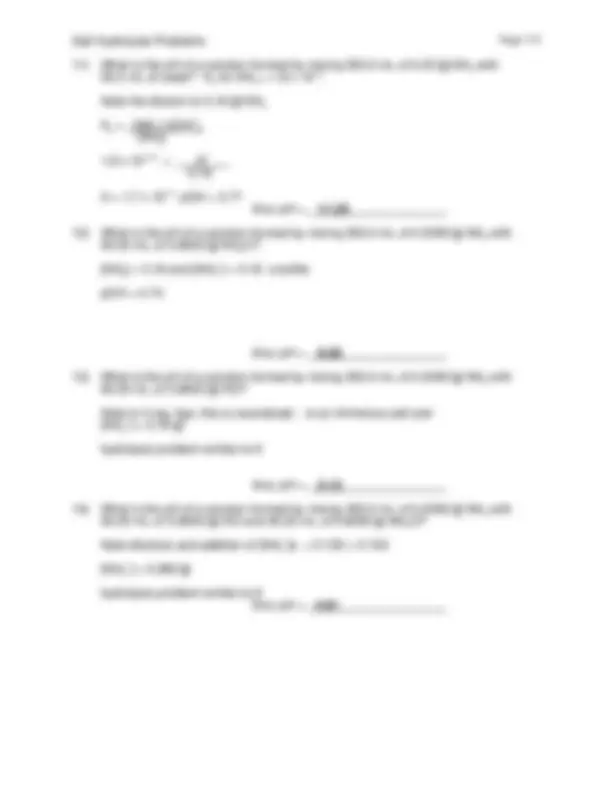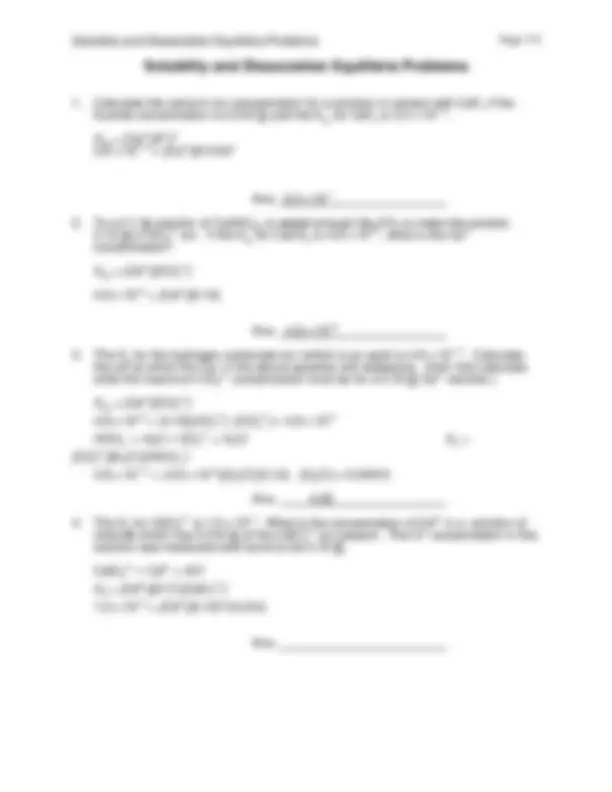





Study with the several resources on Docsity

Earn points by helping other students or get them with a premium plan


Prepare for your exams
Study with the several resources on Docsity

Earn points to download
Earn points by helping other students or get them with a premium plan
Community
Ask the community for help and clear up your study doubts
Discover the best universities in your country according to Docsity users
Free resources
Download our free guides on studying techniques, anxiety management strategies, and thesis advice from Docsity tutors
Material Type: Exam; Class: General Chemistry II; Subject: Chemistry; University: Roane State Community College; Term: Unknown 1989;
Typology: Exams
1 / 6

This page cannot be seen from the preview
Don't miss anything!




CN!^ + H 2 O W HCN + OH!
NH 3 +^ + H 2 O W NH 3 + H 3 O +
Kb = [HCN] [OH!] [CN!]
Ka = [NH 3 ] [H 3 O +] [NH 4 +]
In theory, you are able to work with these equilibria in a fashion similar to what you did in the previous exercise. However, if you attempt to look up the Kb and Ka which you need, you are not likely to find them. This is because the Ka for HCN and the Kb for NH 3 are listed and you can derive the respective K (^) b and Ka from them. This is because the product Ka Kb = Kw = 1.0 x 10!^14. Notice that this is true for the conjugate acid-base pair. For example:
Kb (CN!) = Kw/Ka (HCN)
Kb (CN!) = 1.0 x 10!^14 / 4.2 x 10!^10
Kb (CN!) = 2.4 x 10!^5
Also:
Ka (NH 4 +) = Kw/Ka (NH 3 )
Ka (NH 4 +) = 1.0 x 10!^14 / 1.8 x 10!^5
Ka (NH 4 +) = 5.6 x 10!^10
If you need to use these expressions, the problem is referred to as a salt hydrolysis.
Kb = Kw = [HOCN] [OH-^ ] Ka [OCN!]
1.0 x 10!^14 = 2.9 x 10!^11 = X^2 3.5 x 10!^4 0.
X = 5.3 x 10!^7 pOH = 6. Ans: pH = 7.
Ka = Kw = [NH 3 ] [H 3 O +] Kb [NH 4 +]
1.0 x 10!^14 = 5.6 x 10!^10 = X^2 1.8 x 10!^5 0.
X = 7.5 x 10!^6 pH = 5.
Ans: pH = 5.
3.5 x 10!^4 = (0.30) X
X = 1.17 x 10!^4 pH = 3.
Ans: pH = 3.
Note the dilution to 0.16 M NH 3
Kb = [NH 4 +] [OH!] [NH 3 ]
1.8 x 10!^10 = X^2
X = 1.7 x 10!^3 pOH = 2. Ans: pH = 11.
[NH 3 ] = 0.16 and [NH 4 +] = 0.16 a buffer.
pOH = 4.
Ans: pH = 9.
Note to 4 sig. figs. this is neutralized ˆ is an Arrhenius salt and [NH 4 +] = 0.16 M
hydrolysis problem similar to 6
Ans: pH = 5.
Note dilutions and addition of [NH 4 +]s = 0.133 + 0.
[NH 4 +] = 0.266 M
hydrolysis problem similar to 6 Ans: pH = 4.
Solubility and Dissociation Equilibria Problems Page 173
Ksp = [Ca2+][F^! ] 2 3.0 x 10!^11 = [Ca2+] (0.010) 2
Ans: 3.0 x 10!^7
Ksp = [Ca2+][CO 32^! ]
4.8 x 10!^9 = [Ca2+] (0.10)
Ans: 4.8 x 10!^8
Ksp = [Ca2+][CO 32^! ] 4.8 x 10!^9 = (0.10) [CO 32^! ] [CO 32^! ] = 4.8 x 10!^8 HCO 3!^ + H 2 O W CO 32!^ + H 3 O +^ Ka =
[CO 32^! ][H 3 O +] / [HCO 3^! ]
4.8 x 10!^11 = (4.8 x 10!^8 ) [H 3 O +] /(0.10) [H 3 O +] = 0.
Ans: 4.
CdCl 42!^ W Cd2+^ + 4Cl! Kd = [Cd2+][Cl^! ] 4 /[CdCl 42^! ] 1.0 x 10!^4 = [Cd2+] (0.10) 4 /(0.010)
Ans: